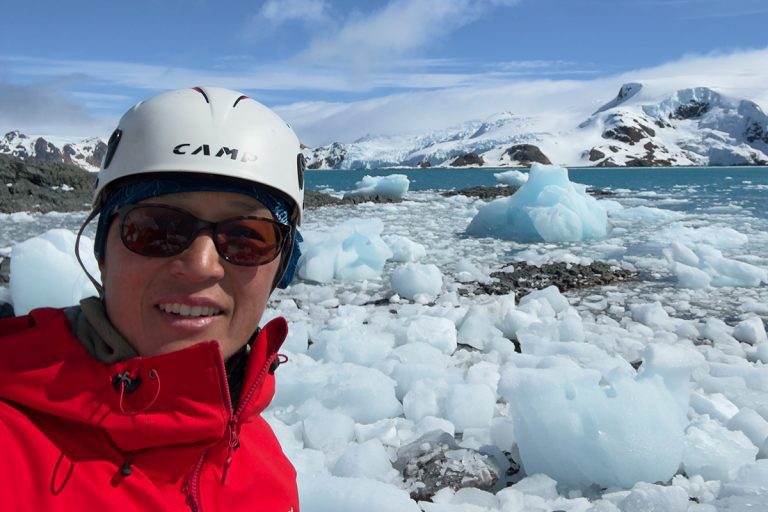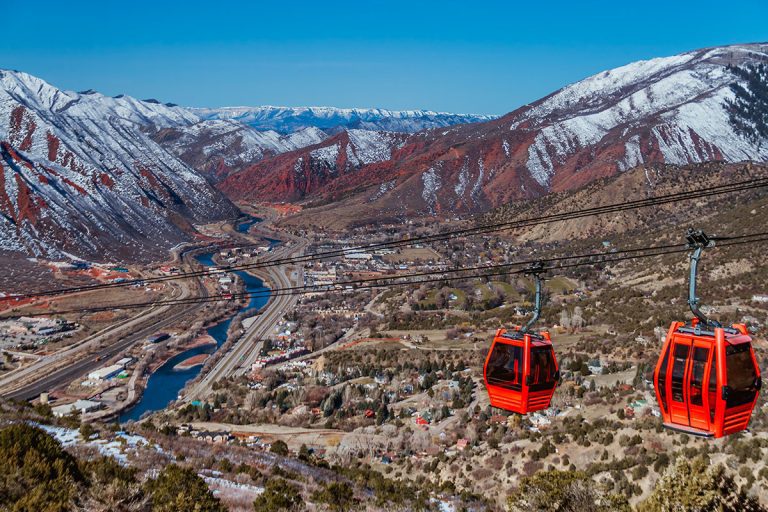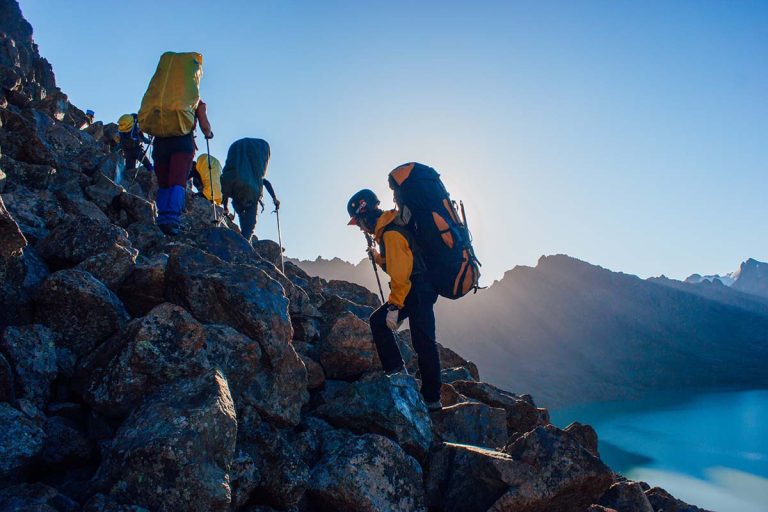
August 25, 2024 was a sunny day with mild temperatures—seemingly perfect for an outdoor adventure. A group of 23 tourists was on a guided tour of Breiðamerkurjökull, a glacier in Iceland’s Vatnajökull National Park, and famous for its ice caves.
Around three pm, an ice arch above a photo-taking area near the trail used for ice cave tours collapsed with a loud boom.
A male tourist from the USA was killed by the collapsing ice. His partner sustained serious but not life-threatening injuries, and was transported by helicopter to the hospital.
The tour operator initially reported that there were 25 participants on the tour. Over the course of two days, more than 200 rescuers from Landsbjörg, the national search and rescue body, searched through the collapsed ice, using chainsaws and ice picks.
But no bodies were found. Emergency officials examined the tour operator’s paperwork, and determined that only 23 guests were actually on the trip—two persons listed on the roster had not turned up for the tour. When it became clear that nobody was missing, the search was called off.

Questions of Ice Cave Safety Practices
Vatnajökull National Park issued a temporary suspension of ice cave tours, while the tragic incident was being investigated.
Questions quickly arose as to whether appropriate safety measures were followed, and whether the park’s safety requirements for tour operators were sufficient.
In cold weather, an ice cave is relatively stable. But in Iceland’s long summer days, an ice cave’s walls and roof can experience up to 10 cm of melting and thinning a day, increasing the risk of catastrophic collapse.
In 2017, the national park asked Magnús Tumi Guðmundsson, a glaciologist at the University of Iceland, to evaluate the safety of ice cave tourism in the park.
Vatnajökull National Park covers some 15,000 sq km, about 14 percent of Iceland, and is home to the Vatnajökull ice cap. Breiðamerkurjökull is one of some 30 outlet glaciers, or glacial tongues, coming off the ice cap, and extends from the 7,700 square km ice cap to the scenic Jökulsárlón lagoon.

Magnús, along with his colleagues at the university’s Faculty of Earth Sciences, wrote a report which included guidance on how to assess risks of ice cave tours in the park. The report also provided guidelines for when ice cave risks were sufficiently low to support visiting the ice caves.
The risk assessment included checking air temperature and wind speed in the days prior to a potential ice cave visit.
Snow and temperatures near freezing indicated lower risk.
However, the presence of meltwater, loose material, broken ice, or ceiling cracks indicated elevated risk.
The report had a system based on green and red. Green indicated relatively low risk. Red, on the other hand, meant high risk, where tours “absolutely should not proceed.” Magnús stated, “It is clear that the entire summer falls into that category.”
Following the incident, Magnús said, “I am just very surprised to see that summer ice cave tours are still being conducted, because the risk is high.”
He continued, “Such tours should not take place. Advertising such tours to tourists is absurd, and hopefully, this will be changed and addressed.”

Changes in the Outdoor Adventure Sector In Iceland
Prior to 2012, there were few ice cave tours at Vatnajökull.
Those that were conducted were held during winter conditions.
“There were never any trips in summer,” Magnus said. “It was absolutely clear to most of the local people, the people who pioneered this kind of work, that it was simply too dangerous.”
However, that decade, tourist arrivals in Iceland began to dramatically increase—by 30 to 40 percent a year.
In 2016, some 1.8 million tourists visited Iceland, a country of about 335,000 people.
The increased business opportunity became clear to outdoor adventure tour providers. The number of ice cave trips increased, and cave trips were increasingly offered in the summer.
As the demand for guided adventure experiences began to exceed the supply of experienced Icelandic guides, tour companies began hiring people from other countries to be tour guides, despite their relatively minimal relevant experience.

Safety Regulations for Ice Cave Tours
Commercial operators must have a permit to run excursions in Vatnajökull National Park.
To get a permit, an operator must first be licensed by Ferðamálastofa (Icelandic Tourist Board), an independent authority under the Ministry of Industries and Innovation.
The permit requirements reference safety standards set by Félag Fjallaleiðsögumanna á Íslandi, the Association of Icelandic Mountain Guides.
And operators are required to have a safety plan.
But the safety plan must only be supplied to Ferðamálastofa if it’s requested.
Ferðamálastofa requested safety plans from a sample of tour operators, but not the company that ran the fatal 2024 ice cave tour.
The system, a Vatnajökull National Park official explained, relies to a certain extent on trust, rather than verification of safety practices.
Iceland’s system for managing adventure tourism risks has been criticized as being characterized by “weak regulatory frameworks and an over-reliance on good faith.”
Ferðamálastofa said they are considering requiring all adventure tourism providers to submit their safety plans.
Experts have called for stricter regulations on ice cave excursions, and new regulations for summertime ice cave tours are expected.

Advancing Adventure Safety in Iceland
Viristar has broad experience in advising government bodies—from the eastern European nation of Georgia to Japan—on the development of adventure safety regulation.
Viristar also has direct experience in the Icelandic adventure travel sector, having run wilderness rescue and emergency medicine training courses for adventure guides in Iceland.
A member of a working group appointed by the Minister of Industries, focused on safety in tourism, reached out to Viristar, seeking information to help shape a more robust and comprehensive approach to risk assessment and the outdoor sector in Iceland.
In 2024 the government developed a new tourism plan, which was voted in by the Icelandic parliament.
Now, the working group is a part of the implementation of the new Icelandic tourism policy, and is engaged in further developing and improving the official risk assessment framework for outdoor recreation and adventure activities in Iceland.
The working group includes representatives from Ferðamálastofa, Landsbjörg, the private adventure tourism sector, the Ministry of Industry and Trade, and Samtök Ferðaþjónustunnar, the Icelandic Travel Industry Association.
Viristar staff met with the working group to discuss how government bodies around the world have approached improving safety outcomes in the adventure sector through introducing regulation and supporting sectoral development.

The working group staff identified the need to be able to distinguish high-risk from lower-risk activities, noting that a snowmobile trip on one glacier might have a different risk profile from a snowmobile trip on another glacier.
Working group staff talked about the need for a continuous improvement process, and challenges in identifying who is responsible for what—for example, figuring out if the operator of a passenger boat providing whale watching should be regulated as a vessel operator or as a tour provider, or both.
“We need to have regulations,” a member of the task group said—but whom to regulate, and to what extent, needs to be determined.
Viristar staff provided information on how governments have dealt with these kinds of issues in Oman, Japan, Switzerland, India, the Republic of Georgia, the UK, and New Zealand.
Viristar provided details on how a third-party audit system can help ensure safety standards are met, and the challenges that various countries have experienced when attempting to support the adventure tourism industry.

Viristar staff discussed which government body might be most well-suited to administer the adventure safety regulatory system, once it is set up.
The working group appears to have an excellent grasp of the issues it seeks to address, and is well-equipped to lead a deliberative process culminating in reasonable and high-quality regulation for Iceland’s adventure tourism industry.
Approaches to Improving Adventure Safety
Outdoor adventure is a part of the national identity of many countries, from New Zealand and Switzerland to Australia and Iceland.
And adventure travel is a significant part of those national economies—and nations seeking to promote sustainable development, including diversifying away from oil and gas.
Fujairah and other locations in the Arabian Peninsula, for example, have recently introduced adventure safety regulations, which include a permitting system and third-party audit structure.
Singapore recently published a Code of Practice for adventure activities, which may form the basis of an accreditation system and eventually a regulatory requirement.
Adventure safety accreditation programs and other voluntary standards can provide an important complement to regulatory structures.
Adventure safety regulation, when thoughtfully crafted and appropriately enforced, and when combined with other structures to support the adventure industry, is a uniquely effective way of improving the safety, quality and sustainability of the adventure sector in any country, worldwide.

How Safe Is Iceland?
Iceland is an extraordinarily safe place for visitors and residents. A high-functioning government, skilled outdoor and adventure professionals, and a society that prizes both safety and adventure make Iceland a world-class destination for adventure-seekers.
Ferðamálastofa recently published data on 25 years of tourist-related safety incidents, covering 839 incidents involving emergency or rescue teams. (Aviation and traffic incidents were excluded.)
Most incidents occur during the summer, and in South Iceland, which has a number of easily accessible and popular tourist destinations such as the iceberg-filled Jökulsárlón lagoon and the magnificent Skógafoss, a thundering waterfall.
The south saw the most fatalities—38. Falls, on hiking trails or viewing platforms, were a common cause of incidents, and injury from stepping into hot springs was also a significant factor.
The location with the next-highest number of incidents is the mountainous interior Highlands. These are less commonly visited by short-stay tourists, but with remote locations and rugged glaciers, hiking and glacier-related incidents predominated.
The data was gathered from published reports. Ferðamálastofa is working to create a central registry of tourism-related incidents.

Iceland does have real hazards, such as volcanic eruptions, avalanches and the occasional polar bear that floats across from Greenland.
Iceland has no snakes or mosquitoes, however, or the risks they bring.
Icelandic folklore does tell of the fearsome Lagarfljót serpent, a giant lake monster dwelling in Lagarfljót, a lake in eastern Iceland. The wyrm was first sighted in 1345 and rarely since then, so the risk to travelers is considered minimal.
Iceland is also home to the Yule Lads, sons of the troll Grýla (who turned misbehaving children into stew), known for thievery and other mischief. These days, however, the Yule Lads are known for Santa-like gift-giving, so travelers (and their children) need not worry.






